The .270 Winchester is almost a century-old cartridge now, but its popularity does not seem to fade even with several modern cartridges around with similar performance. Similarly, the .308 Win has been a long-time favorite of users due to its versatility and acceptance by NATO forces (read the difference further).
The comparison between .270 Win and .308 Win often becomes a heated debate. However, did you know that there’s only a speck of difference between these when we talk about ballistics data? Then why is one considered superior over the other by different people?
Take a deep dive and enhance your knowledge on this subject.
TL;DR: .270 vs .308

.270 Ammo
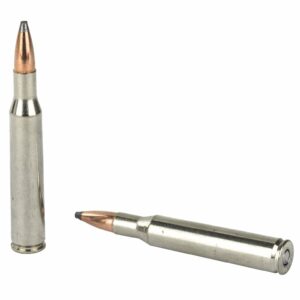
.308 Ammo
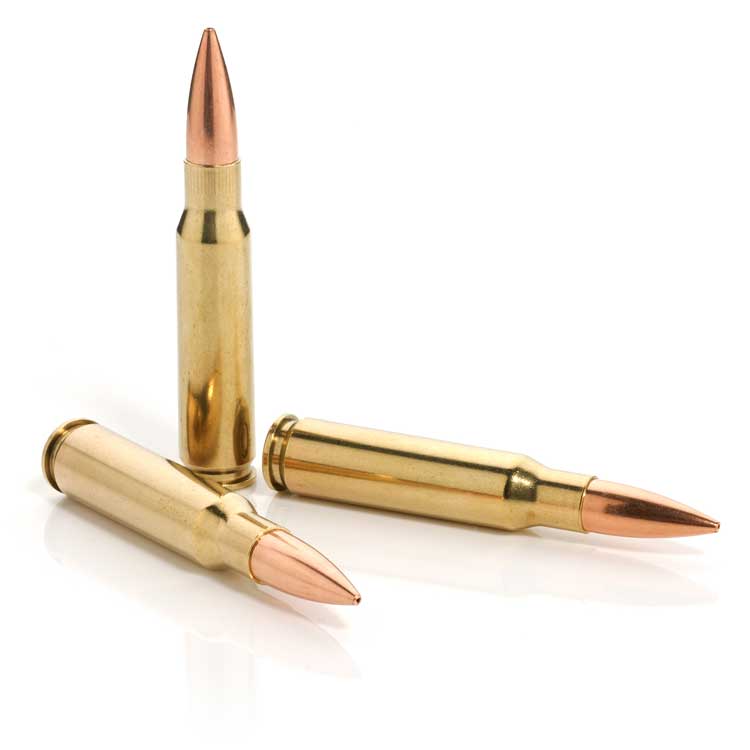
Pros
.270
Widely available and easy to reload
High velocity and lesser wind drift
Flat trajectory, mild recoil, and long range
Good sectional density. Offers deep penetration with a light bullet
.308
Widely available and many options to choose from
Versatile round; can be used in semi-auto rifles as well
Civilian version of the 7.62 NATO which is widely used by many armies
Slightly better stopping power and good long range accuracy
Cons
.270
Rifles are long and only bolt-action
A tad expensive compared to .308 Win
Long action design. Only for bolt-action rifles
.308
Slightly more recoil and noisy
Overkill for small game or short range
Best For
.270
The .270 Win is perfect for long range competitions and hunting medium and some big-sized game.
.308
The .308 Win is a versatile cartridge that can serve long range, tactical uses and hunting all animals up to CXP3.
A .270 Overview
The .270 Winchester is a member of the old-guard family of cartridges. At 98 years old now, this legendary round was developed in 1923 and was derived from the famous .30-03 Springfield and uses it as the parent case. It is a long action rifle cartridge that uses a .277 inch diameter bullet and is renowned as a medium to long range hunting round.
After its introduction on the market in 1925, the .270 Winchester was not an immediate success and took a long time to gain popularity. Especially after gaining popularity among famous gun writers and magazines. It has a longer overall length than the .30-06 Springfield and .308 Winchester and a high-pressure rating, which makes it primarily suited for bolt action rifles.
The most common rifling twist for .270 Winchester is 1:10 and the most common bullet calibers are 130 and 150 grains. However, the 110-grain bullet is also widely accepted and used as a varminting bullet for smaller game like coyotes.

A seven-pound rifle chambered for this cartridge will generate about 19 foot-pounds of recoil energy and the bullets stay supersonic for about 1,100 yards on average. The .270 Winchester clearly stands among the top 10 most popular cartridges in North America.
A .308 Overview
The .308 Winchester (also known as the 7.62×51 mm NATO, but there are a few minor differences) was introduced by Winchester Repeating Arms Company on the North American market in 1952. Ballistically similar to the .30-06 Springfield and also shorter, it uses a .300 Savage parent case and is a rimless bottlenecked rifle cartridge.
The .308 Winchester is sometimes also called the 7.62 NATO because basically, it is a civilian version of the 7.62 NATO military cartridge. Loaded to a higher pressure and a minute change in headspacing which does not hamper interchangeability.
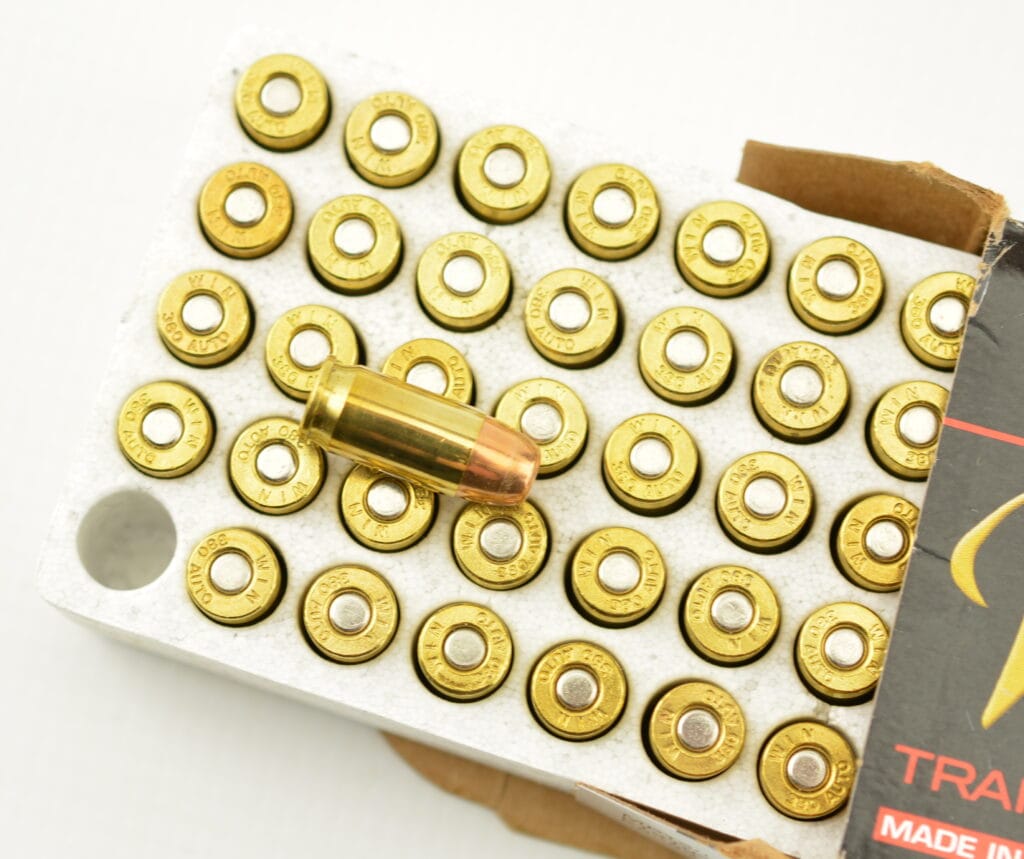
Not only in the United States– but the .308 Winchester is highly revered as a hunting and long range sniping cartridge. The .308 Win / 7.62 NATO are widely used by civilians and militaries across the world.
The cartridge has an overall length of 2.8 inches which is just on the borderline of the difference between a long and short action cartridge. So the .308 Win can be easily found in semi-auto as well as bolt action rifles.
The average twist rate for .308 Win barrels is 1:12 inches and common bullet weights range from 130 to 180 grains.
270 vs 308: Cartridge Specs
Take a look at the side-by-side comparison of the .270 Winchester and .308 Winchester cartridges.
| 270 | 308 | |
|---|---|---|
| Bullet Diameter | .277 in (7.0 mm) | 0.308 in (7.8 mm) |
| Neck Diameter | .308 in (7.8 mm) | 0.3433 in (8.72 mm) |
| Base Diameter | .470 in (11.9 mm) | 0.4709 in (11.96 mm) |
| Case Length | 2.540 in (64.5 mm) | 2.015 in (51.2 mm) |
| Overall Length | 3.340 in (84.8 mm) | 2.800 in (71.1 mm) |
| Case Capacity | 67 grains | 56 grains |
| Max Pressure (SAAMI) | 65,000 psi | 62,000 psi |
| Typical Casing Material | Brass | Brass |
| Typical Bullet Weight (gr) | 110 – 150 grains | 125 – 180 grains |
Starting with the dimensions, as you can see that the .308 Winchester is clearly a short/long action cartridge whereas the .270 Win is a long action cartridge. That is because when the .308 Win was developed (after WWII), the army was looking to shorten the length and reduce the recoil of the .30-06 Springfield (7.62×63 mm) round while maintaining its stopping power. The .308 or 7.62 NATO was technically the first post-war effort to improve cartridges.
The .308 Win uses a larger bullet compared to the .270 Win that gives it more punching power and a bigger wound channel. However, the .270 Win has marginally better trajectory characteristics. I will elaborate more on that in the next sections.
A longer case means more powder for the .270 Winchester. Although, this also means longer loading times as the bolt has to travel more distance. The .270 Win keeps a more old-school approach rather than achieving a quicker rate of fire. However, the .308 features a thicker wall design of the case.
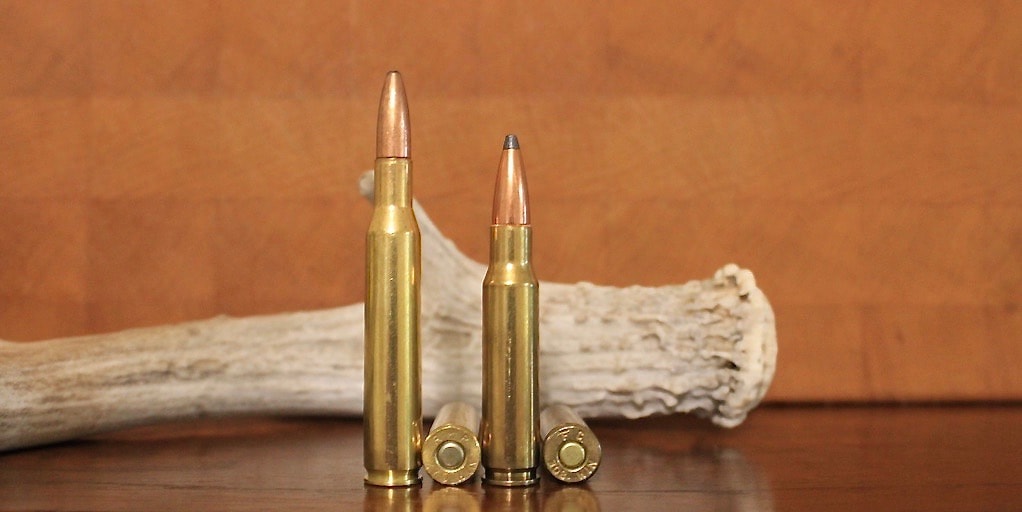
As far as controllability is concerned, the .270 Win has marginally lower recoil than the .308 Win. However, .270 Win rifles tend to be longer and cannot be shortened or customized like the .308 Win options.
270 vs 308: Ballistics
The study of ballistics concerns the movement characteristics of a projectile. Factors such as flight trajectory, wind drift, velocity, energy, and momentum are vital to understand and estimate the point and result of impact accurately.
Since both of these cartridges are intended for long range use and especially hunting. It is important to understand their behavior over a long range for accurate analysis. I will try to simplify the concepts of sectional density and momentum to give even the most layman reader a comprehensible idea.
270 vs 308: Trajectory
Given below is the data comparison of both these rounds for drop up to a range of 500 yards. Although both these cartridges are capable of hitting targets at 1000 yards, most of the action will happen under 500 yards. Additionally, if you are planning on hitting targets at 1,000 yards, a minor difference in ballistic coefficient (BC) or rifle/bullet characteristics create significant differences. So let’s keep it simple.
.270
| Range | 20” barrel/BC 0.380/110 gr Tipped Triple Shock | 20” barrel/BC 0.439/130 gr Tipped Triple Shock | 20” barrel/BC 0.480/150 gr Gameking BTSP |
|---|---|---|---|
| 100 yds | 0“ Drop | 0“ Drop | 0“ Drop |
| 200 yds | 2.06“ Drop | 2.81“ Drop | 3.50“ Drop |
| 300 yds | 8.35“ Drop | 10.65“ Drop | 12.77“ Drop |
| 500 yds | 37.06“ Drop | 45.03“ Drop | 52.50“ Drop |
.308
| Range | 20” barrel/BC 0.409/150 gr FMJ Boat-tail | 20” barrel/BC 0.503/175 gr BTHP | 20” barrel/BC 0.475/165 gr Nosler Accubond |
|---|---|---|---|
| 100 yds | 0” Drop | 0” Drop | 0” Drop |
| 200 yds | 3.6” Drop | 4.4” Drop | 4.01” Drop |
| 300 yds | 13.4” Drop | 15.65” Drop | 14.43” Drop |
| 500 yds | 56.4” Drop | 63.1” Drop | 58.92” Drop |
Interestingly, the .270 Win and .308 Win closely resemble each other in terms of drop characteristics. For example, the 150-grain bullet for either of these rounds shows almost a similar drop. Even at 500 yards, the difference is just four inches which shouldn’t be considered too much.
For an even accurate comparison, the heaviest bullets from both these calibers in this table (150 gr for .270 Win and 175 gr for .308 Win) clearly indicate that with increasing distances the .270 Win is a flatter shooting bullet. A three inch difference at 300 yards turns out to be a nine inches difference at 500 yards and further expands to 55 inches at 1,000 yards.

In fact, the .270 Win bullet shows a slightly better resistance towards wind drift and will require lesser elevation adjustment when taking long range shots, along with a slightly better travel time. Additionally, when same bullet weights are considered, the .270 Win bullets feature a better ballistics coefficient (air resistance) compared to the .308 Win.
If only long range engagements with steel or paper targets are concerned. The .270 Win is a better option in terms of trajectory and is comparable to some renowned modern long range loads like the 6.5 Creedmoor.
270 vs 308: Velocity & Kinetic Energy
After comparing the trajectories, let us take a look at the speed and energy characteristics of these two cartridges. While the velocity factor helps with trajectory estimation and penetration, the kinetic energy factor describes the impact and wound channel size.
.270
| Range | 20” barrel/BC 0.380/110 gr Tipped Triple Shock | 20” barrel/BC 0.439/130 gr Tipped Triple Shock | 20” barrel/BC 0.480/150 gr Gameking BTSP |
|---|---|---|---|
| 100 yds | 3,127 ft/s, 2,388 ft.lbs | 2,841 ft/s, 2,329 ft.lbs | 2,640 ft/s, 2,231 ft.lbs |
| 200 yds | 2,872 ft/s, 2,014 ft.lbs | 2,633 ft/s, 2,001 ft.lbs | 2,457 ft/s, 2,010 ft.lbs |
| 300 yds | 2,631 ft/s, 1,690 ft.lbs | 2,434 ft/s, 1,710 ft.lbs | 2,282 ft/s, 1,734 ft.lbs |
| 500 yds | 2,185 ft/s, 1,166 ft.lbs | 2,063 ft/s, 1,228 ft.lbs | 1,953 ft/s, 1,270 ft.lbs |
.308
| Range | 20” barrel/BC 0.409/150 gr FMJ Boat-tail | 20” barrel/BC 0.503/175 gr BTHP | 20” barrel/BC 0.475/165 gr Nosler Accubond |
|---|---|---|---|
| 100 yds | 2,598 ft/s, 2,248 ft.lbs | 2.427 ft/s, 2,288 ft.lbs | 2.513 ft/s, 2,313 ft.lbs |
| 200 yds | 2,387 ft/s, 1,897 ft.lbs | 2,261 ft/s, 1,986 ft.lbs | 2,334 ft/s, 1,996 ft.lbs |
| 300 yds | 2,185 ft/s, 1,590 ft.lbs | 2,101 ft/s, 1,715 ft.lbs | 2,162 ft/s, 1,712 ft.lbs |
| 500 yds | 1,812 ft/s, 1,093 ft.lbs | 1,802 ft/s, 1,262 ft.lbs | 1,841 ft/s, 1,242 ft.lbs |
Comparing the numbers for velocity for bullets of comparable weights, you can clearly see that the .270 and .308 stay supersonic beyond 500 yards. At any point, the difference between the velocity of these bullets at a given range is around 150 ft/s. Fast velocity means lesser travel time and lesser impact of natural factors like gravity and wind drift.
Talking about kinetic energy, the lighter .270 Win bullet carries almost the same and in some cases even more energy for comparable bullet weights. Thanks to the high case capacity, the .270 Win bullet can be pushed to a long range with enough power to clearly take down a big game animal under 400 yards.
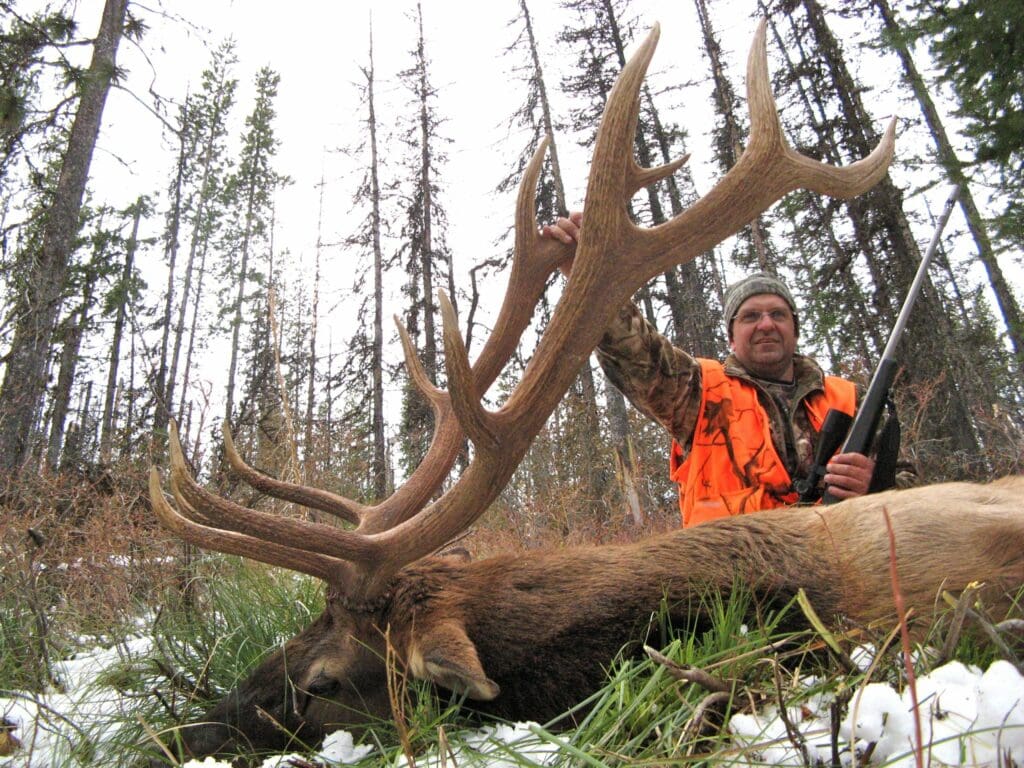
A widely agreed upon minimum energy requirement to take down an elk or moose is 1500 foot-pounds and both these bullets conform to this concept. However, the energy possessed by .270 Win and .308 Win is certainly overkill for small game animals. Additionally, the overpenetration characteristics of both these bullets limit their use to mostly hunting and competitions.
Velocity is an important contributor to penetration and is extremely helpful when taking long range shots and positively helps with the expansion of the bullet. However, on the contrary, a high-velocity bullet will put more pressure and wear on the barrel and shorten its life.
270 vs 308: Stopping Power
The stopping power of a bullet explains the amount of force it can transfer effectively into a target and the degree of expansion to create a big wound channel. In layman’s terms, the stopping power refers to the ability of a bullet to stop a target (animal or human) right in its tracks. A bullet with good stopping power will need lesser rounds to incapacitate a target which is essential for situations like hunting or combat.
270 vs 308: Momentum & Sectional Density
Sectional density is the ratio of an object’s mass to its cross-sectional area. As far as bullets are concerned, the higher this number the longer a bullet will be. Additionally, such a bullet will penetrate deeper and cause more damage to the target.
A sectional density greater than 0.250 is considered good for Class 3 big game like moose and elk. Whereas an SD greater than 0.300 is good for thick-skinned Class 4 dangerous big game animals like bears.
.270
| Range | 20” barrel/BC 0.380/110 gr Tipped Triple Shock Sectional Density: 0.205 | 20” barrel/BC 0.439/130 gr Tipped Triple Shock Sectional Density: 0.242 | 20” barrel/BC 0.480/150 gr Gameking BTSP` Sectional Density: 0.279 |
|---|---|---|---|
| 100 yds | 49.13 lb.ft/s | 52.76 lb.ft/s | 56.57 lb.ft/s |
| 200 yds | 45.13 lb.ft/s | 48.89 lb.ft/s | 52.65 lb.ft/s |
| 300 yds | 41.34 lb.ft/s | 45.20 lb.ft/s | 48.90 lb.ft/s |
| 500 yds | 34.33 lb.ft/s | 38.31 lb.ft/s | 41.85 lb.ft/s |
.308
| Range | 20” barrel/BC 0.409/150 gr FMJ Boat-tail Sectional Density: 0.226 | 20” barrel/BC 0.503/175 gr BTHP Sectional Density: 0.264 | 20” barrel/BC 0.475/165 gr Nosler Accubond Sectional Density: 0.248 |
|---|---|---|---|
| 100 yds | 55.67 lb.ft/s | 60.67 lb.ft/s | 59.23 lb.ft/s |
| 200 yds | 51.15 lb.ft/s | 56.52 lb.ft/s | 55.01 lb.ft/s |
| 300 yds | 46.82 lb.ft/s | 52.52 lb.ft/s | 50.96 lb.ft/s |
| 500 yds | 38.82 lb.ft/s | 41.32 lb.ft/s | 43.39 lb.ft/s |
The two best metrics to understand the stopping power of a bullet are sectional density and momentum. Since one describes the penetrating ability and the other describes the efficiency of energy transfer.
Momentum is calculated as mass times velocity for a moving object. So technically a lighter bullet with more velocity will cause equal damage compared to a heavier bullet with lesser velocity. Given that the sectional density for both the bullets is comparable.
The sectional density of .270 Win and .308 Win bullets is closely comparable for similar bullet weights. Additionally, neither of these bullets is suitable for CXP 4 games, but some weights are very effective for CXP 3 games like elk or moose.
Again, the sectional density and momentum values are closely comparable for the .270 Win and .308 Win bullets. Since the velocities of both these bullets are quite similar, the heavier bullet weights of the .308 Win give it a little advantage in terms of momentum. However, the difference is never greater than 2-3 ft.lb/s within a range of 500 yards and the game animal will not notice the difference.
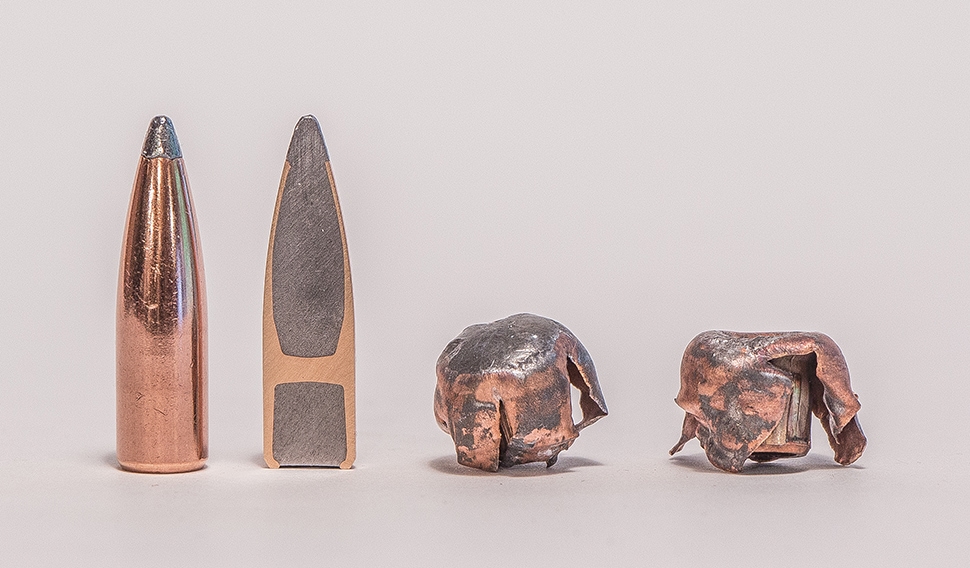
270 vs 308: Use Cases & Effective Range
Coming to the real deal, let us now take a look at the realistic applications for both these cartridges. Both these rounds are capable of long range accuracy and feature almost similar characteristics for stopping power, velocity, and momentum.
Big Game Hunting
As I already mentioned, the .270 Win and the .308 Win are capable of taking down big game like elk within a range of 400 yards. However, a peculiar factor is the better performance of 150 grain .270 Win bullets compared to the heavier grain loads of .308. In fact, according to the data the 150 grain, .270 Win bullets are the most versatile when medium and big game hunting is in question.
The .270 Win is also a winner in terms of recoil. However, the long action design will mean mostly bolt action rifles which can be heavy or clumsy to handle.
Long Range Competitions
The .270 Win has an amazingly flat trajectory that can be compared to modern loads like the 6.5 Creedmoor. This and the fast velocity does give it a slight edge over the .308. However, as a matter of fact, the .270 Win is not as popular as the .308 Win for long range competitions.
A good reason for that is the huge amount of research that has been put into the development of .308 Win being a military cartridge.
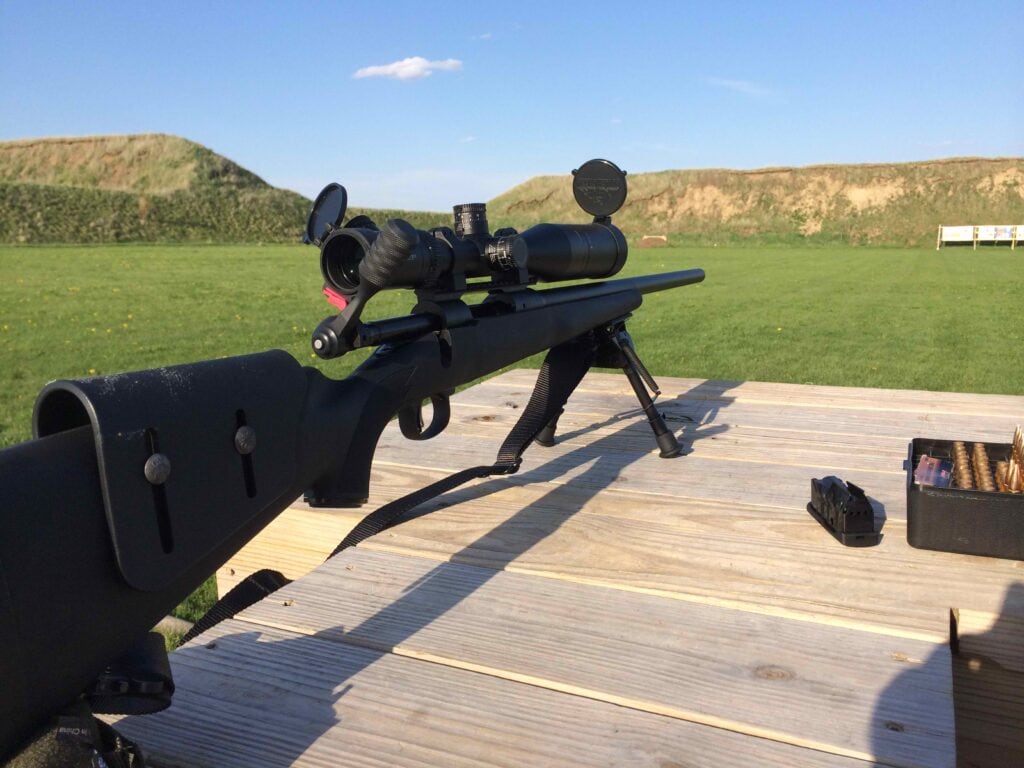
There are literally a ton of options to choose from and loads of data to learn and compare. On the other hand, the. 308 caliber, 168-grain MatchKing BTHP is the preferred ammo for police snipers in the USA.
Apart from this, there is no reason to deduce the .270 Win is not preferable for long range use. The ballistic coefficient, trajectory, velocity, and stopping power of both these bullets are almost identical. It’s just that you have to do your due diligence when working with .270 Win. Both of these are good 1,000 yards plus cartridges.
Range Practice
Since both of these rounds are suitable for long range and hunting, you will probably want to practice a lot with them at the range. As far as price is concerned, the .308 Win has a slight edge over the .270 Win. That is due to its wide acceptance and availability of milsurp ammo. However, in most cases, the difference will not be significant.
270 vs 308: Costs, Availability & Compatibility
When panic breaks out in society, one of the first things that vanishes from market shelves is ammo. Especially common cartridges that are easily available and versatile. Let’s compare these two cartridges on a few such factors.
Popular Cartridges Vanish First
The recent Covid-19 lockdowns triggered a lot of panic buying and gun stores faced a huge shortage of ammo. The .308 Win is a very popular cartridge and is also a military round so availability should not be a concern most of the time. However, if panic buying starts, the .308 Win will sell out faster than the .270 Win which is considered more of an obscure choice.
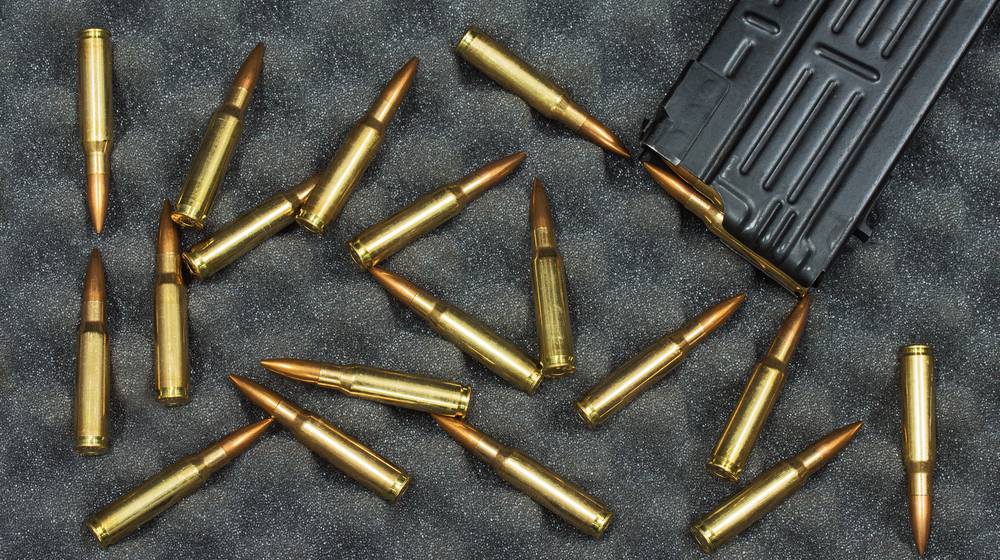
Versatility in Rifle Options
The .270 Win is exclusively a bolt action rifle cartridge. Whereas, the .308 Win can be used in bolt actions or semi-auto rifles. Almost every leading rifle manufacturer designs a wide range of rifles chambered for the .270 Win or .308 Win. So as far as weapon options are concerned, no problem with that.
However, one thing to note here is that bolt action rifles are not always very versatile. Especially in today’s scenario where semi-auto weapons are a norm.
Bottom Line
The .270 Winchester and .308 Winchester have case designs inspired from the .30-03. While .270 Win uses a lighter but longer bullet, it showcases a marginally better trajectory than the .308 Win. On the other hand, the .308 Win was designed to replace the .30-06 Springfield while retaining the same amount of power in a smaller package.
Both of these are good long range cartridges and capable of taking down big-sized Class 3 game within 400 yards. While the .270 Win is more popular among the hunters’ community, the .308 Win is the civilian version of the 7.62 NATO which is a widely used assault rifle, sniper rifle, and light machine gun cartridge by many militaries around the world.


